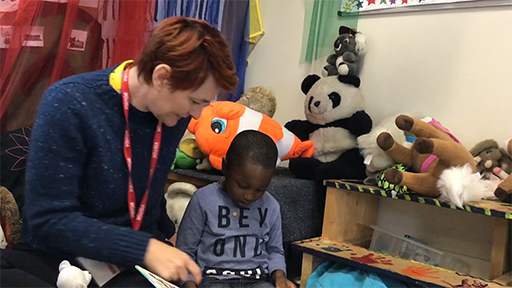10 Reader identities
The ways in which children and young people ‘identify’ or ‘see’ themselves as readers influences their motivation to read. Self-fulfilling prophecies flourish: those who consider themselves ‘good’ readers are more likely to engage and sustain engagement, and thus become better readers, whilst those who see themselves as poor readers, or who struggle with the reading level required by a class activity might quickly become disengaged. Young children’s reader identities develop at the intersection of how they are positioned by influential people in their lives, such as parents, teachers, siblings and peers, and how they position themselves as readers.

The ways in which reading is perceived in homes, alongside the nature of parent–child interactions around reading, positions children as readers in particular ways. For example, when young children’s early attempts at reading from memory, reading pictures and reciting repetitive refrains are valued and celebrated as authentic reading, children come to see themselves as legitimate readers. However, when these practices are dismissed as ‘not real’ reading, children can construct a deficit view of themselves as readers. Similarly, teachers’ views of what counts as reading, their understandings and reinforcement of the expected reading level at a particular age and the opportunities they offer children, will shape the young people’s emerging reader identities. Influenced by the standards agenda, educators may think of reading as proficiency, and may thus position children such as Ishmael, who you met in Activity 2, as poor or reluctant readers if they don’t read fluently, show accuracy with decoding or score well in comprehension tests (Hempel-Jorgensen et al., 2018).
Unfortunately, research has also found that educators’ perceptions of gender, social class and ethnicity also influence how they perceive and position individual children as readers (Hempel-Jorgensen and Cremin, 2021).
SAQ _unit3.10.1 Personal reflection 4
Think of a less engaged or reluctant reader in your class. Are they given the same opportunities as more engaged or able readers?
Who do they interact with? Is the reading material they are offered equally as tempting?
What kind of reader identity do you think they hold?
Children also have agency; they may accept, negotiate or reject the ways in which they are positioned by others in particular contexts and may assert their own ‘sense of self’ as a reader. Opportunities for children to share their personal reading practices, whether it be novels, sports magazines, websites or superhero comics, are opportunities to promote themselves as ‘expert’ in a particular subject and positively position themselves as a certain kind of reader. More attention needs to be given to the development of positive reader identities in education as young readers are always in the process of learning how to be readers. Reader identities are not static but are shaped by the context, the people within it and the opportunities offered to engage with texts.
To support children’s identities as readers, teachers need to get to know each reader well, to notice, document, reflect and act upon their preferences and practices at home and at school. Ways to do so are examined in Session 4.
Activity _unit3.10.1 Activity 4 Nurturing young children’s reader identities
Watch this video of a practitioner and a young child reading together. As you watch make a note of the ways the interaction may influence this little boy’s identity as a reader. For example, does the practitioner give him space to lead? Does she respect and value his views and ideas? She certainly responds very positively to his comments.

Transcript: Video 4
[CHUCKLES]
Comment
You probably noticed many ways that the teacher nurtured this little boy’s reader identity. For example, she listened to him carefully and responded to his comments and actions. In doing so she made it clear that his voice and views are important and valued. She avoided asking lots of closed questions, or questions that he was unable to answer. Instead, she followed his lead, enabling him to express his ideas on aspects of the text that were important to him.
